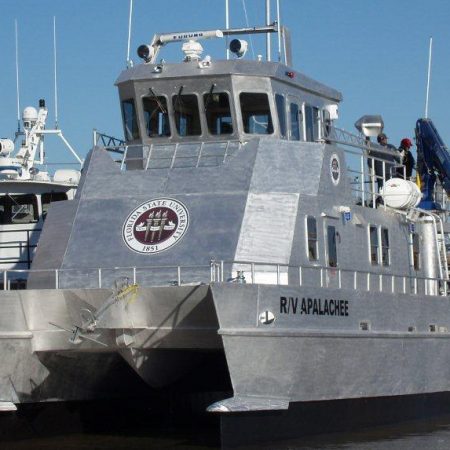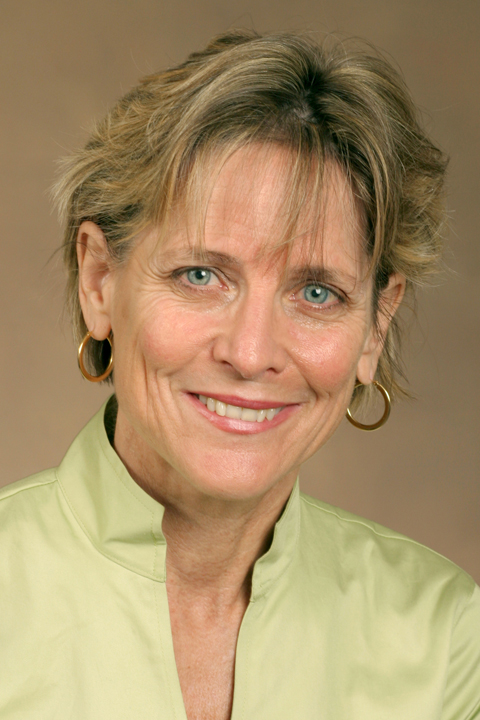
The RV Apalachee, Florida State University’s cutting-edge research ship, will set out on a 10-day fact-finding trip from the university’s Coastal & Marine Laboratory at St. Teresa, Fla., on Thursday, July 18.
This is the first extended voyage for the nearly 65-foot-long vessel. The ship will carry eight researchers as they trap, tag and collect samples from 700 to 1,000 fishes and sharks throughout the northeastern portion of the Gulf of Mexico. Faculty and graduate students will collect tissue samples to study how these animals are metabolizing toxins released by the Deepwater Horizon oil spill, among other research projects.
The RV Apalachee is the fastest ship of its kind in the region and “has tremendous capabilities for research,” said Marine Lab director Felicia Coleman. “This is a big deal for the ship, for the Marine Lab and for the university.”
The Apalachee fills a great need.
“One of the things that became really painfully obvious when the oil spill occurred was everybody wanted to get out there and do research,” said Dean Grubbs, RV Apalachee chief scientist and associate director of Coastal & Marine Laboratory research.
But renting ships can cost more than $10,000 a day. Florida State has conducted extensive post-Deepwater Horizon oil spill research, but at a high cost and on much slower boats.

The RV Apalachee is cost-effective and well equipped for its mission.
“It’s a very fast, mobile platform,” Grubbs said.
Built at the Geo Shipyard in New Iberia, La., and completed in January, the RV Apalachee has wet and dry labs, lots of deck space, a crane and hydraulics capable of hauling a 17-foot-long tiger shark on board.
“It’s the only ship of its class in the region,” Grubbs said.
And it allows researchers to get out and do their work quickly. Most similar research vessels do six or 10 knots — “We can do 20,” Coleman said. This speed and the RV Apalachee’s stable design will be a draw for students and faculty, she added.
The ship has been out in the Gulf, but this marks the RV Apalachee’s first overnight research mission. On board will be Grubbs; captain Rosanne Weglinski; back-up captain Hugh Williams; assistant research faculty member Chip Cotton; graduate student Johanna Imhoff; technician Chris Malinowski; and two University of North Florida graduate students, Arianne Leary and Amanda Brown.
The ship will head southwest from the lab in St. Teresa and make its way across the Desoto Canyon. The crew will make a port call in Panama City, Fla., about halfway through the trip to refuel and let everyone have one night’s sleep on solid ground.
“When we’re out there we work around the clock,” Grubbs said.
The RV Apalachee will travel as far west as Louisiana, and will set two of its trapping stations very close to the site of the oil spill.
The crew will set a series of traps and hooks between 80 and 2,000 meters deep to capture and characterize bony fishes, sharks, crabs and isopods. Researchers want to compare shallow-water communities with deep sea communities, Grubbs said. The crew will collect tissue samples to look at mercury levels, and also will specifically take liver and bile samples to measure toxins and see how they have been metabolized.
The researchers also will collect genetic samples, as there are new species to be found in the Gulf. Grubbs expects they will catch between 700 and 1,000 animals of up to 60 or 70 different species. The crew also will tag and release up to 150 sharks.
Grubbs said the plan is for the RV Apalachee to make 10-day trips every three months.




